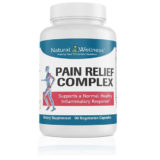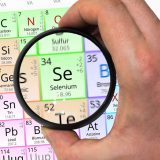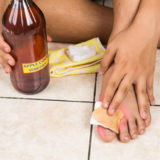

Foam rollers are tubes of foam that come in various diameters and densities and can be used to roll or compress muscle fibers and fascia (connective tissue) in order to release restrictions, increase flexibility and decrease pain. Foam rollers can be used to break up adhesions and scar tissue in both muscle and fascia, reducing pain in the long run.
Myofascial Release and Ischemic Compression
Myofascial release is a massage technique that involves applying slow, sustained pressure on the connective tissue (fascia) to allow the fibers time to elongate. This process has been proved to eliminate pain and restore mobility in soft tissues. Another massage technique called ischemic compression is commonly used in the treatment of trigger points. Pressure is applied to the muscle and maintained for 30 – 45 seconds, blocking the blood flow to the tissue. Fresh blood floods the area upon release of the pressure, re-oxygenating the muscle where the trigger point resided, releasing it.
Foam Rollers
Foam rollers offer a way of performing these two types of massage on your own muscles, allowing you to have control over depth and duration of pressure. Foam rollers can be used after a warm-up to lengthen soft tissue or post-workout to flush out tissue, bring in fresh blood and lengthen soft tissue so that it does not tighten up in response to exercise.
When working with a foam roller, position the area you are working over the roller, using hands, elbows and the leg you are not rolling to support your weight and control the depth of pressure.
3 Important Cautions
There are some cautions to be aware of before you begin. First, SLOW DOWN! Foam rolling is meant to be done slowly, allowing the connective tissue time to release. Second, do not use the foam roller directly on the low back. To release low back pain, roll hips, buttocks and hamstrings but do not apply pressure directly to the lumbar spine. Finally, do not work any one area for more than three to four minutes at a time.
When rolling out muscle, move slowly (myofascial release technique). When you come across a tight spot, either pause over it (ischemic compression) for 30 – 45 seconds or try rolling back and forth over it (friction) for a few passes until it relaxes.
Here are some ways to use the foam roller to work out tight muscle tissue:
- Calves – Sit on the floor with the roller under one ankle, use arms and the leg you are not rolling to lift your weight and roll towards the back of the knee. Repeat on other leg. This is fantastic for anyone who runs or who wears heels all day.
- Hamstrings – Sit with roller under right knee, cross left ankle over the right ankle. Using arms to support body weight, rolling toward the hamstring origin (“sit bones”). Repeat on other leg.
- Hip Flexors – Lie face down with roller under hips. Use your arms to control your upper body weight as you roll forward, moving the roller down along the quadriceps toward the knee. Be careful to not put pressure directly on the knee. This is a great stretch for anyone who sits at a desk all day!
- Upper Back – Place the roller vertically, along the spine with feet flat on the floor. Use arms with hands behind the head or alongside the body to roll side to side, pausing on tight spots.
- IT Band – Lie with the outer side of your bottom leg on the roller at hip level. Using your arms and crossing the other leg in front of you to support your weight, roll down toward knee. Repeat on other leg. This can be especially sensitive so be sure to move slowly.
- Glutes – Sit on roller with left leg crossed over the right. Using hands and lower leg to control your body weight, roll out the right glute, shifting weight to get as much area as possible. Repeat on the other side. This is helpful for anyone with sciatic pain.
There are many reasons muscle and fascia may become tight and painful, including exercise, inactivity, repetitive activity and poor posture. Using a foam roller can be a great way to release restrictions and relieve pain.
Editor’s Note: Support joint health with Joint Support and Turmeric 95! Moreover, Turmeric 95, the world’s most potent turmeric, promotes your body’s own natural anti-inflammatory actions and relieves headaches, stiff joints, aches and pains, without gastrointestinal upset.




